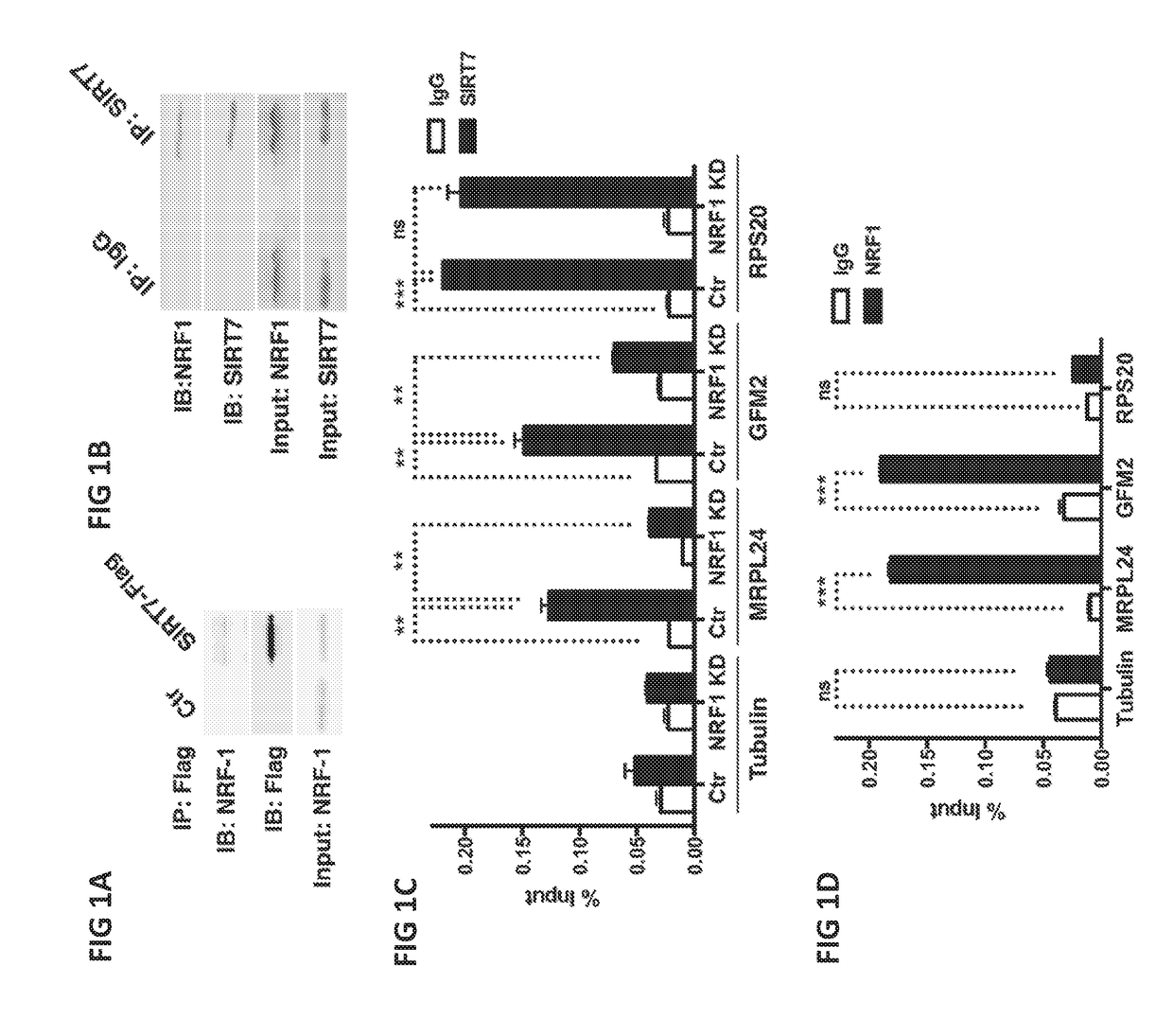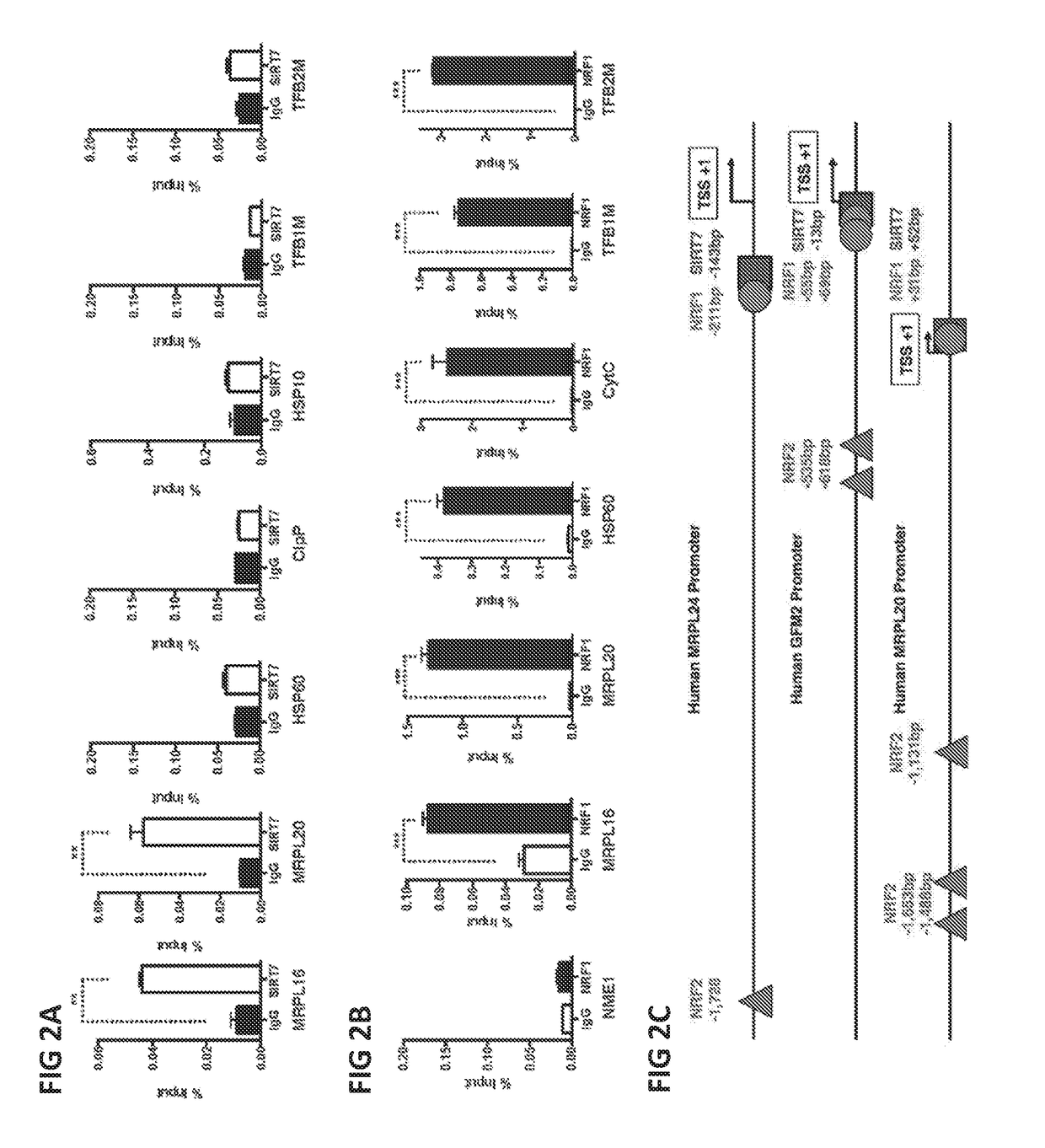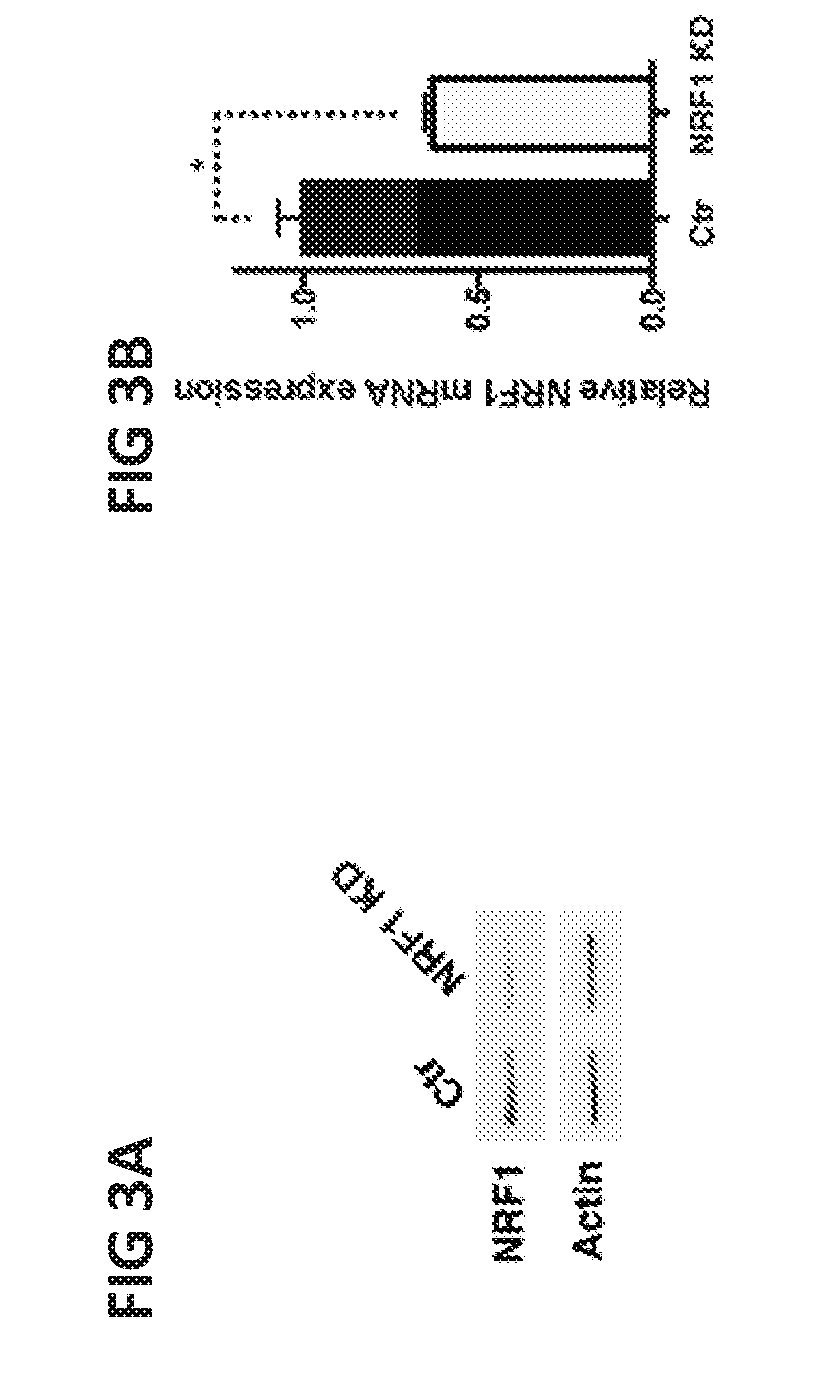Methods of preventing and reversing stem cell aging
- Summary
- Abstract
- Description
- Claims
- Application Information
AI Technical Summary
Benefits of technology
Problems solved by technology
Method used
Image
Examples
example 1
resses Transcription Through NRF1
[0076]SIRT7 is a histone deacetylase that is recruited to its target promoters via interactions with transcription factors for transcriptional repression (7). A proteomic approach was taken to identify SIRT7-interacting transcription factors. 293T cells were transfected with Flag-tagged SIRT7, affinity-purified the Flag-tagged SIRT7 interactome, and identified SIRT7-interacting proteins by mass spectrometry. Among the potential SIRT7-interacting proteins was Nuclear Respiratory Factor 1 (NRF1), a master regulator of mitochondria (8). Transfected Flag-SIRT7 and endogenous SIRT7 interacted with NRF1 in 293T cells (FIGS. 1, A and B).
Transcriptional Repression of Mitochondrial Translational Machinery
[0077]SIRT7 bound the proximal promoters of mitochondrial ribosomal proteins (mRPs) and mitochondrial translation factors (mTFs), but not other NRF1 targets (FIG. 1C and FIG. 2A and (7)). NRF1 bound the same regions as SIRT7 at the proximal promoters of mRPs ...
example 3
Critical for HSC Maintenance and can Reverse Aging of HSCs
HSCs Require SIRT7 to Limit PFSmt, Mitochondrial Mass, and Proliferation
[0082]What is the physiological relevance of the SIRT7-mediated UPRmt? In C. elegans, the UPRmt is activated during a developmental stage when a burst of mitochondrial biogenesis takes place and is attenuated when mitochondrial biogenesis subsides (17). Thus, the SIRT7-mediated UPRmt may be important for cells that experience bursts of mitochondrial biogenesis and convert between growth states with markedly different bioenergetic demands and proliferative potentials, such as stem cells. Quiescent adult stem cells have low mitochondrial content, but mitochondrial biogenesis increases during proliferation and differentiation (4).
[0083]Because SIRT7 is highly expressed in the hematopoietic system, focus was given to HSCs isolated from SIRT7+ / + and SIRT7− / − mice (FIG. 9). SIRT7− / − HSCs had increased expression of UPRmt genes, indicative of increased PFSmt (FI...
example 4
f Findings
[0087]Collectively, the results highlight PFSmt as a trigger of a metabolic checkpoint that regulates HSC quiescence, and establish the deregulation of UPRmt as a contributing factor for HSC aging. Using a stress signal as a messenger to return to quiescence may ensure the integrity of HSCs, which persist throughout the entire lifespan for tissue maintenance. The interplay between SIRT7, which is induced upon PFSmt, and NRF1, a master regulator of mitochondria, is uniquely positioned to integrate PFSmt to metabolic checkpoint regulation.
[0088]SIRT7 represses NRF1 activity to reduce the expression of the mitochondrial translation machinery and to alleviate PFSmt (FIGS. 1 and 4). In vivo gene expression studies cannot distinguish direct versus indirect effects. In this regard, ChIP-seq studies are informative in identifying direct SIRT7 targets (7). While gene expression changes in the metabolic tissues of SIRT7− / − mice are likely reflective of severe mitochondrial and metab...
PUM
 Login to View More
Login to View More Abstract
Description
Claims
Application Information
 Login to View More
Login to View More - R&D
- Intellectual Property
- Life Sciences
- Materials
- Tech Scout
- Unparalleled Data Quality
- Higher Quality Content
- 60% Fewer Hallucinations
Browse by: Latest US Patents, China's latest patents, Technical Efficacy Thesaurus, Application Domain, Technology Topic, Popular Technical Reports.
© 2025 PatSnap. All rights reserved.Legal|Privacy policy|Modern Slavery Act Transparency Statement|Sitemap|About US| Contact US: help@patsnap.com



